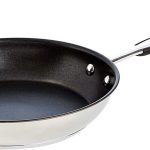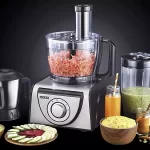How to Cook Ground Beef In A Crockpot?

Yes, without a doubt. However, extra caution should be given when seasoning and cooking ground beef in a crockpot because of the tiny portions.
Since the turn of the century, crockpots, sometimes known as slow cookers, have become indispensable for the average American kitchen. In the 1940s, it was first used by women who worked away from home, allowing them to start supper preparation in the morning and finish it when they returned home in the evening. Crockpots come in various sizes and serve as cooking vessels and heat reservoirs.
Ground beef is popular because it is a reasonably inexpensive and quick-cooking beef. Hamburgers, sausages, and cottage pies are just a few dishes used. It’s used in meatloaf, sloppy joes, porcupine meatballs, tacos, and most other midwestern dishes. Although it’s usually made with the tougher cuts of beef, tender cut trimmings can also be used.
What’s different about slow cooker cooking?
To account for these factors, slow cooker recipes must be modified from those for other cooking techniques. Because steam escapes through evaporation, the volume of liquids may need to be adjusted somewhat, but there should be enough liquid for the food.

Crockpots are your best bet when creating healthy meals at a minimal cost. They’re often affordable, simple to use, and quickly transform modest meat cuts or low-cost vegetarian foods into delectable feasts.
Slow cookers increase the flavor of a meal by turning unappealing slices of beef into delectable dishes by cooking them slowly over several hours.
The majority of slow cooker recipes are simple and require little to no cooking expertise. Crockpots are ideal for various foods, including casseroles, homemade meatballs, lasagna, mashed potatoes, and bone broths, but they may also be used to cook pulled pork, chicken, or ground beef. When cooked in a Crockpot, ground beef is at its most soft. Ground beef is also more delicious due to the long cooking time.
How to make crockpot ground beef
A few considerations to make depending on the type of crockpot you’re using and the typical cooking temperature:
- The first is to keep the temperature of your ground beef constant during the cooking procedure. Because ground beef contains bacteria that reproduce rapidly at temperatures between 40 and 140 degrees, it’s best to cook it to a steady internal temperature of 160 degrees.
- Also, try not to use ground beef straight from the freezer; starting the cooking process at room temperature is preferable. Cooking refrigerated ground beef takes longer than cooking ground beef that starts at room temperature. Those extra minutes add to stiffer, drier fibers as the proteins in muscle fibers become stronger and more flavor escapes.
- To avoid clumps of excess fat in your dish, brown the ground beef before putting it in the slow cooker. The caramelized portion of the beef will help give the finished meal a deep flavor.
- It would help if you tried to season your ground beef sparingly and use less water during preparation. Because Crockpots produce steam that stays in the pot as long as the lid is closed, the dish will have less liquid when it’s done than when it started. To this end, avoid the impulse to check on your ground beef frequently while it’s cooking. The steam produced by slow cooking is a component of the cooking medium. This steam will be released if the lid is opened, lengthening the cooking time.

What foods should not be cooked in a crockpot?
Fast meals are out of the question for slow cookers because they are meant to produce recipes that require less supervision and management. Because dairy products like milk, cream, yogurt, and cheese tend to curdle, they should not be cooked in a slow cooker.
Couscous cooked for a long time will become mushy and unappealing. Rice, pasta, and other foods that require less than 20 minutes to prepare should not be cooked in a crockpot; otherwise, you risk getting coarse grains or mashed-up pasta.
A crockpot should not be used to cook chicken skin or boneless chicken breast. When cooked for an extended period, lean meat can dry up and become extremely tough; however, boned chicken can be cooked in a crockpot without the skin. When chicken skin is cooked slowly, it becomes tough and rubbery.
Cooking delicate vegetables like eggplant, tomatoes, peas, and zucchini for an extended period is not recommended. To keep the nutrition and crispiness of these vegetables, add them to your recipes right before serving.

Final Thoughts
It should be emphasized that slow cookers have several drawbacks and dangers, and they should be utilized with these drawbacks in mind. Crockpots have inherent issues, notwithstanding their low cost, electricity savings, and other advantages.
Crockpots do not offer enough heat to compensate for moisture and steam loss caused by frequent cover removal, such as to add seasoning; added ingredients must be allowed enough time to cook before the food can be consumed.
Long-term steaming of food, particularly vegetables, can result in nutritional loss. Due to the high condensation, the surplus liquid comes in vapor, and consider the droplets when adding ingredients to the mix. If the surplus liquid is not carefully controlled, it may dilute the added seasoning.
Crockpots can also produce inconsistent outcomes. Some foods require more time to prepare than others. Cooking the hard components first to match the other ingredients can help to ensure that the food is evenly cooked. Because slow cookers function best with fresh produce, the number of foods prepared is limited.











